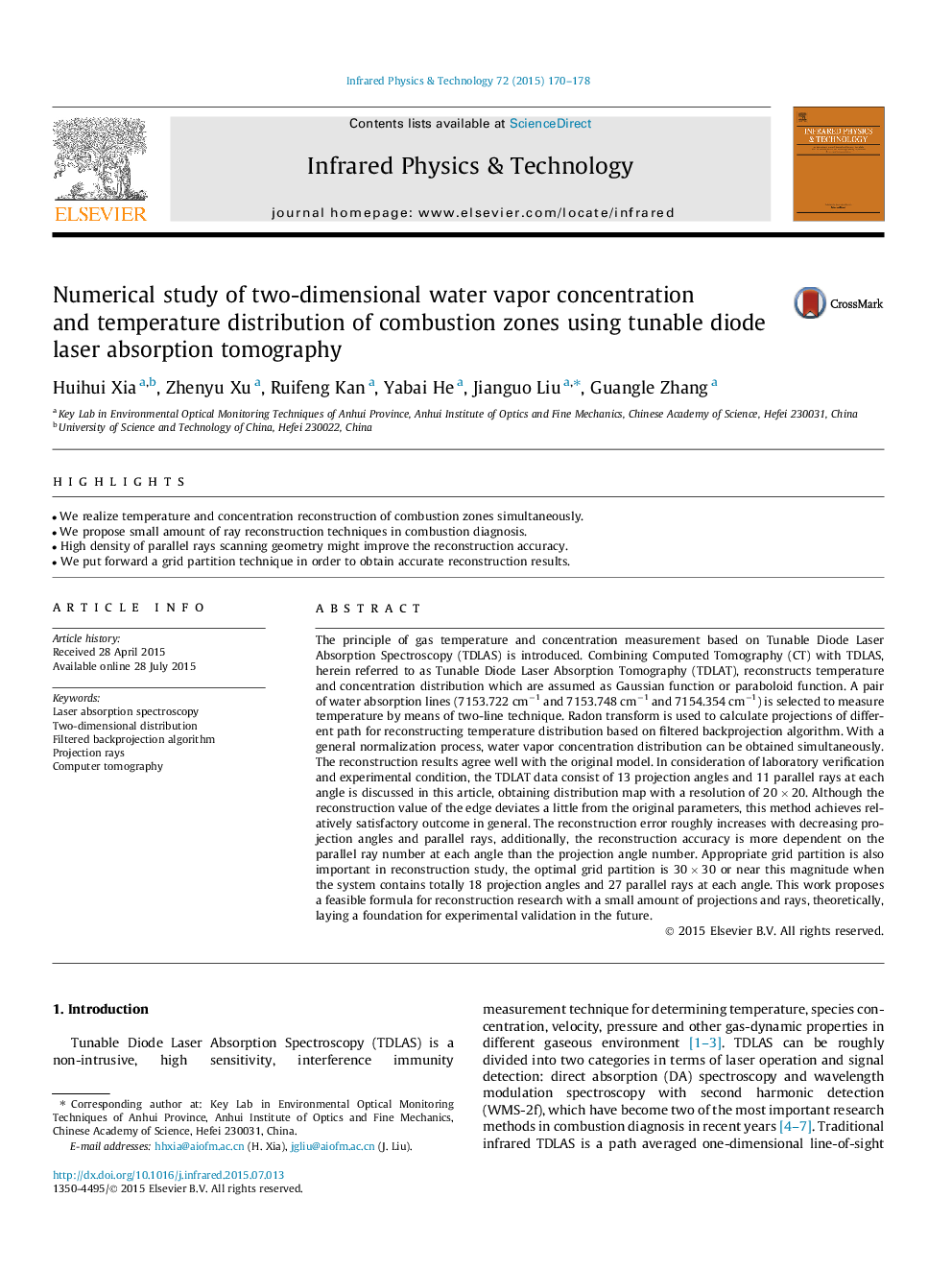| کد مقاله | کد نشریه | سال انتشار | مقاله انگلیسی | نسخه تمام متن |
|---|---|---|---|---|
| 1784046 | 1524114 | 2015 | 9 صفحه PDF | دانلود رایگان |
عنوان انگلیسی مقاله ISI
Numerical study of two-dimensional water vapor concentration and temperature distribution of combustion zones using tunable diode laser absorption tomography
ترجمه فارسی عنوان
مطالعه عددی دو جزء غلظت بخار آب و توزیع دما در مناطق احتراق با استفاده از توموگرافی جذب لیزر دیود قابل تنظیم
دانلود مقاله + سفارش ترجمه
دانلود مقاله ISI انگلیسی
رایگان برای ایرانیان
کلمات کلیدی
طیف سنجی جذب لیزر، توزیع دو بعدی، الگوریتم برگشتی تصفیه شده اشعه پروژکتور، توموگرافی کامپیوتری
موضوعات مرتبط
مهندسی و علوم پایه
فیزیک و نجوم
فیزیک اتمی و مولکولی و اپتیک
چکیده انگلیسی
The principle of gas temperature and concentration measurement based on Tunable Diode Laser Absorption Spectroscopy (TDLAS) is introduced. Combining Computed Tomography (CT) with TDLAS, herein referred to as Tunable Diode Laser Absorption Tomography (TDLAT), reconstructs temperature and concentration distribution which are assumed as Gaussian function or paraboloid function. A pair of water absorption lines (7153.722Â cmâ1 and 7153.748Â cmâ1 and 7154.354Â cmâ1) is selected to measure temperature by means of two-line technique. Radon transform is used to calculate projections of different path for reconstructing temperature distribution based on filtered backprojection algorithm. With a general normalization process, water vapor concentration distribution can be obtained simultaneously. The reconstruction results agree well with the original model. In consideration of laboratory verification and experimental condition, the TDLAT data consist of 13 projection angles and 11 parallel rays at each angle is discussed in this article, obtaining distribution map with a resolution of 20Â ÃÂ 20. Although the reconstruction value of the edge deviates a little from the original parameters, this method achieves relatively satisfactory outcome in general. The reconstruction error roughly increases with decreasing projection angles and parallel rays, additionally, the reconstruction accuracy is more dependent on the parallel ray number at each angle than the projection angle number. Appropriate grid partition is also important in reconstruction study, the optimal grid partition is 30Â ÃÂ 30 or near this magnitude when the system contains totally 18 projection angles and 27 parallel rays at each angle. This work proposes a feasible formula for reconstruction research with a small amount of projections and rays, theoretically, laying a foundation for experimental validation in the future.
ناشر
Database: Elsevier - ScienceDirect (ساینس دایرکت)
Journal: Infrared Physics & Technology - Volume 72, September 2015, Pages 170-178
Journal: Infrared Physics & Technology - Volume 72, September 2015, Pages 170-178
نویسندگان
Huihui Xia, Zhenyu Xu, Ruifeng Kan, Yabai He, Jianguo Liu, Guangle Zhang,
